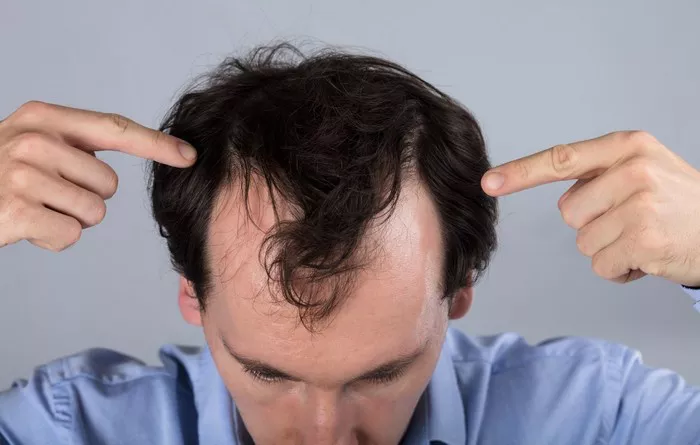Male Androgenetic Alopecia (AGA), commonly known as male pattern baldness, is a prevalent condition that affects a significant portion of the male population. While it is a hereditary and often progressive condition, advancements in medical research and technology have prompted the exploration of potential solutions. In this article, we delve into the question on many minds: Can male Androgenetic Alopecia be reversed?
1. Understanding Male Androgenetic Alopecia
Before exploring potential reversals, it’s crucial to understand the basics of AGA. This type of hair loss is primarily driven by genetic and hormonal factors. The hormone dihydrotestosterone (DHT) plays a pivotal role in AGA, causing hair follicles to shrink over time. This shrinking leads to finer and shorter hair until, eventually, the follicles become dormant.
2. Medications: The Frontline Defense Against AGA
One of the most researched and widely used approaches to combat male Androgenetic Alopecia is the use of medications. Two FDA-approved medications, finasteride and minoxidil, have shown promise in slowing down hair loss and, in some cases, promoting regrowth.
a. Finasteride: Targeting DHT Production
Finasteride is an oral prescription medication that works by inhibiting the production of DHT. By reducing DHT levels, finasteride helps to slow down the hair loss process and, in some instances, promotes regrowth. It’s essential to note that results may vary, and the effectiveness of finasteride may depend on factors such as the stage of hair loss and individual response.
b. Minoxidil: Stimulating Hair Follicles
Minoxidil, available as a topical solution or foam, is another FDA-approved medication for AGA. It is believed to work by increasing blood flow to the hair follicles, thereby stimulating hair growth. While minoxidil has demonstrated efficacy for some individuals, its results can also vary, and continued use is often necessary to maintain any regrowth.
3. Platelet-Rich Plasma (PRP) Therapy: A Regenerative Approach
Platelet-Rich Plasma (PRP) therapy has gained popularity as a non-surgical option for addressing male Androgenetic Alopecia. In this procedure, a patient’s blood is drawn, processed to concentrate the platelets, and then injected into the scalp. PRP is thought to promote hair regrowth by stimulating the activity of hair follicles and prolonging the growth phase of the hair cycle.
4. Low-Level Laser Therapy (LLLT): Harnessing Light for Hair Growth
Low-Level Laser Therapy (LLLT) is another emerging option for individuals seeking to reverse male Androgenetic Alopecia. Devices such as laser combs or helmets emit low-level lasers or light-emitting diodes (LEDs) to the scalp, purportedly promoting cellular activity and enhancing the conditions for hair growth. While research on the effectiveness of LLLT is ongoing, some individuals report positive results.
5. Hair Transplantation: A Surgical Solution
For those seeking a more permanent and immediate solution, hair transplantation remains a viable option. During this surgical procedure, hair follicles are harvested from areas of the scalp resistant to DHT and transplanted to the balding or thinning areas. While hair transplantation is effective, it is essential to consult with a qualified professional to determine candidacy and set realistic expectations.
6. Lifestyle Changes: Holistic Approaches to Hair Health
Beyond medications and procedures, adopting a healthy lifestyle can contribute to overall hair health and potentially slow down Androgenetic Alopecia progression. Adequate nutrition, stress management, and regular exercise play essential roles in maintaining general well-being, which, in turn, can positively impact hair health.
See Also: The Benefits of Vitamin E for Your Locks: A Complete Guide
Conclusion: A Personalized Approach to AGA
While male Androgenetic Alopecia may pose a challenge, the landscape of potential solutions is continually evolving. Medications like finasteride and minoxidil, regenerative therapies such as PRP, low-level laser therapy, and surgical options like hair transplantation offer diverse approaches for individuals seeking to address hair loss. It’s crucial to consult with a healthcare professional or a qualified specialist to determine the most suitable and personalized approach based on individual factors such as health status, lifestyle, and the stage of hair loss. With advancements in science and medicine, the hope of reversing male Androgenetic Alopecia is becoming more tangible, offering individuals the opportunity to regain confidence and a fuller head of hair.


